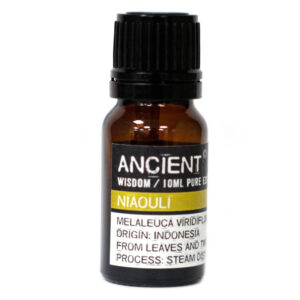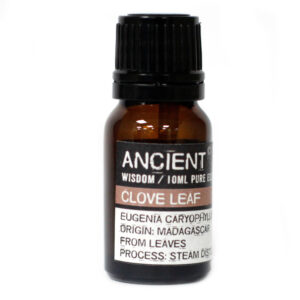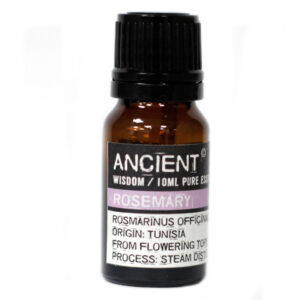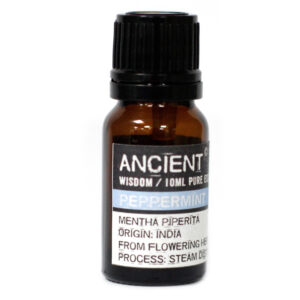
Description
The World of Aromatherapy’s Lime Essential Oil
🍈 Discover the zesty allure of our Lime Essential Oil, a spirited symphony of tropical freshness encapsulated in each precious drop.
🌳 Sourced from the finest lime groves, this oil brings forth a lively citrus burst, reminiscent of sunlit orchards and gentle breezes.
💆♂️ In the realm of aromatherapy, Lime Essential Oil is celebrated not only for its invigorating scent but also its ability to rejuvenate the mind, clear mental fog, and instil a sense of energetic optimism.
🌍 Safeguarded within our sustainable packaging, every droplet pledges purity, offering a gateway to nature’s vibrant heart and the energising embrace of lush lime groves.
🌟 Allow our Lime Essential Oil to awaken your senses, infuse zest into your day, and become a refreshing beacon in your aromatherapeutic journey.
Latin Name : Citrus Aurantifolia.
Part Of Plant Used : Fruit Peel.
Source : Mexico.
Extraction Method : Cold Expression.
This Lime Essential Oil is obtained from Citrus aurantifolia, also known as Mexican or West Indian lime, as well as sour lime. The oil is extracted from the peel of the unripe skin by cold expression or from the peel and/or the whole ripe fruit by steam distillation. Lime oil has a sharp, citrus smell that immediately perks up one’s mood on smelling it, and is pale yellow to light olive in colour.
Lime oil, when used in an oil burner, stimulates a tired mind and helps ease anxiety, apathy, and depression. It is useful to reduce fevers associated with colds, sore throats, and flu. It increases immunity while easing coughs, bronchitis, sinusitis, and asthma. It is said to be helpful for arthritis,
rheumatism and poor circulation, as well as for obesity and cellulite. This oil is good for the skin; it reduces oiliness and acne, helps with herpes, insect bites and cuts. However, the oil that is obtained by cold expression (as opposed to steam distillation) can cause photosensitivity and irritate the skin.
Limes are originally from Asia, but they are now grown in most warm countries like Italy, the West Indies, and the Americas. The lime is green when raw and ripens to yellow, and usually measures about two inches in diameter. It was introduced into Europe by the Moors and from there it migrated to the Americas. The lime is said to have a lower Vitamin C content than lemons do. People often carried limes on long ship journeys to prevent sailors getting scurvy from Vitamin C deficiency.
Additional information
| Weight | 0.04 kg |
|---|---|
| Size | 10ml, 50ml, 500ml |
You must be logged in to post a review.
Related Products
Related products
-

Niaouli Essential Oil
£4.25 – £79.95Price range: £4.25 through £79.95 Select options This product has multiple variants. The options may be chosen on the product page -

Clove Leaf Essential Oil
£3.55 – £69.99Price range: £3.55 through £69.99 Select options This product has multiple variants. The options may be chosen on the product page -

Rosemary Essential Oil
£4.00 – £75.00Price range: £4.00 through £75.00 Select options This product has multiple variants. The options may be chosen on the product page -

Peppermint Essential Oil
£4.50 – £69.95Price range: £4.50 through £69.95 Select options This product has multiple variants. The options may be chosen on the product page
Lime Essential Oil from The World of Aromatherapy: Benefits and Uses
Lime essential oil is a popular oil in the world of aromatherapy, known for its refreshing and uplifting qualities. The oil is extracted from the rinds of unripe limes or from the whole ripe crushed fruit. Lime oil has a long and interesting history, having been used by the British Navy to combat scurvy in the 10th century.
Lime essential oil is widely used in aromatherapy for its energizing, fresh and cheerful aroma. It is said to cleanse, purify and renew the spirit and the mind. The oil is also used as an antiseptic, a tonic, a digestive aid, and an emotional uplifter. Lime essential oil blends well with other citrus oils, as well as floral and spicy oils.
Key Takeaways
- Lime essential oil is extracted from the rinds of unripe limes or from the whole ripe crushed fruit.
- The oil is widely used in aromatherapy for its energizing, fresh and cheerful aroma.
- Lime essential oil is used as an antiseptic, a tonic, a digestive aid, and an emotional uplifter.
History and Origin of Lime Essential Oil
Lime essential oil has a rich history dating back to ancient times. The fruit is believed to have originated in Southeast Asia, specifically in India, and was introduced to Europe by Arab traders in the 10th century. Christopher Columbus also played a role in the spread of lime trees, as he brought them to the Caribbean during his voyages in the late 15th century.
Lime essential oil was highly valued by ancient civilizations for its medicinal properties. The juice and flesh of the fruit were used to treat a variety of ailments, including scurvy, dysentery, and fever. The oil was also used topically to treat wounds and skin infections.
In the 19th century, lime oil became popular in the perfume industry, as it has a fresh and uplifting scent. Today, lime essential oil is widely used in aromatherapy for its numerous health benefits.
Despite its long history, little is known about the origins of the lime tree. It is believed to be a hybrid of the lemon and citron trees, but its exact parentage is still a mystery.
In conclusion, lime essential oil has a fascinating history, dating back to ancient times. Its origins can be traced to Southeast Asia, and it has been valued for its medicinal properties for centuries. Today, it is widely used in aromatherapy for its fresh and uplifting scent, as well as its numerous health benefits.
Extraction of Lime Essential Oil
Lime essential oil is extracted from the rind of the Citrus aurantifolia fruit. The oil is obtained through steam distillation or cold pressing. Both methods are effective in extracting the oil, but the quality and quantity of the oil can vary depending on the method used.
Steam Distillation
Steam distillation is the most common method used to extract lime essential oil. In this method, steam is passed through the rind of the fruit, causing the oil to be released. The steam and oil are then condensed and collected.
This method is preferred because it produces a high-quality oil with a strong citrus scent. However, it is important to note that the yield of oil obtained through steam distillation is relatively low.
Cold Pressing
Cold pressing is another method used to extract lime essential oil. In this method, the rind of the fruit is mechanically pressed to release the oil.
This method is preferred because it produces a high yield of oil. However, the quality of the oil obtained through cold pressing is not as high as the oil obtained through steam distillation.
It is important to note that the quality and quantity of the oil obtained through both methods can vary depending on the quality of the fruit used and the extraction process.
In conclusion, both steam distillation and cold pressing are effective methods for extracting lime essential oil. The choice of method depends on the desired quality and quantity of the oil.
Characteristics of Lime Essential Oil
Lime essential oil is a popular citrus oil that is extracted from the peel of the lime fruit. It is known for its fresh, uplifting aroma and its many therapeutic benefits. Here are some of the key characteristics of lime essential oil:
Aroma
Lime essential oil has a bright, citrusy fragrance that is both refreshing and energizing. It is often used in aromatherapy to promote mental clarity, reduce stress and anxiety, and improve mood.
Citrus
As a citrus oil, lime essential oil is known for its cleansing and purifying properties. It is often used in natural cleaning products and can be added to water or other beverages for a refreshing citrus flavour.
Thin Consistency
Lime essential oil has a thin, watery consistency that makes it easy to mix with other oils or to use in a diffuser. It is also easily absorbed by the skin, making it a popular choice for massage and skincare products.
Colour
Lime essential oil is typically a pale yellow or greenish-yellow colour, depending on the ripeness of the fruit from which it was extracted.
Fragrance
In addition to its bright, citrusy aroma, lime essential oil has a slightly sweet and tart fragrance that is both invigorating and calming. It blends well with other citrus oils, as well as with floral and herbal oils.
Overall, lime essential oil is a versatile and beneficial oil that can be used for a wide range of purposes. Its fresh, uplifting aroma and cleansing properties make it a popular choice for aromatherapy, cleaning, and personal care products.
Key Components of Lime Essential Oil
Lime essential oil is extracted from the rind of the lime fruit through a process of cold pressing or steam distillation. The oil has a fresh, citrusy scent that is both invigorating and uplifting. Lime essential oil is known to have a variety of beneficial properties, including antioxidant and antibacterial effects.
One of the key components of lime essential oil is limonene, which is a terpene that gives the oil its distinct citrusy aroma. Limonene is also known to have antioxidant properties, which can help to protect the body from free radical damage. Additionally, limonene has been shown to have anti-inflammatory effects, which may help to reduce inflammation in the body.
Another important component of lime essential oil is linalool, which is a terpene alcohol that is known for its relaxing and calming effects. Linalool is also known to have antibacterial properties, which can help to protect the body from harmful bacteria.
Lime essential oil is also a rich source of vitamin C, which is an important antioxidant that is essential for maintaining healthy skin, bones, and immune function. Vitamin C is also known to have anti-inflammatory effects, which can help to reduce inflammation in the body.
Overall, lime essential oil is a versatile and beneficial oil that can be used for a variety of purposes. Its key components, including limonene, linalool, and vitamin C, make it a valuable addition to any aromatherapy routine.
Aromatherapy and Lime Essential Oil
Lime essential oil is a popular choice in the world of aromatherapy due to its fresh, citrus aroma and a variety of potential benefits. Aromatherapy is the practice of using essential oils to promote physical and emotional well-being.
When used in a diffuser, lime essential oil can help to energize and uplift the mind. Its bright and refreshing scent can help to clear the aura and promote a sense of positivity and relaxation. Aromatherapists may recommend lime essential oil to clients who are feeling down or anxious.
In addition to its potential benefits for the mind, lime essential oil may also be useful for the body. It is believed to have antiseptic and antiviral properties, making it a popular choice for natural cleaning products and personal care items. Lime essential oil may also be used as a digestive aid, as it is said to help stimulate the production of digestive juices.
Aromatherapists may incorporate lime essential oil into their practice in a variety of ways. It can be used alone or in combination with other essential oils to create custom blends for clients. Lime essential oil may also be added to carrier oils, such as jojoba or coconut oil, for use in massage or as a skin care product.
Overall, lime essential oil is a versatile and popular choice in the world of aromatherapy. Its fresh scent and potential benefits for both the mind and body make it a valuable addition to any aromatherapist’s toolkit.
Health Benefits and Uses
Lime essential oil has been used for centuries for its numerous health benefits and uses. This essential oil is extracted from the rinds of unripe limes or steam distilled from the whole ripe crushed fruit. Lime essential oil has a refreshing and uplifting aroma, making it a popular choice for aromatherapy.
Skin Benefits
Lime essential oil is known for its antibacterial and purifying properties, making it an excellent choice for skincare. It can help to cleanse and purify the skin, making it a popular choice for those with acne-prone skin. Lime essential oil can also help to reduce the appearance of blemishes and dark spots.
Energy and Mood Boosting
Lime essential oil has a refreshing and uplifting aroma that can help to boost energy levels and improve mood. It is often used in aromatherapy to help reduce stress and anxiety.
Immune System Support
Lime essential oil has antiviral and antibacterial properties, making it an excellent choice for supporting the immune system. It can help to fight off infections and viruses, making it a popular choice during flu season.
Digestive Aid
Lime essential oil can help to support healthy digestion. It can help to stimulate the production of digestive juices and enzymes, making it easier for the body to break down food.
Massage
Lime essential oil can be used in massage to help relieve muscle tension and reduce inflammation. It can also help to improve circulation and promote relaxation.
Overall, lime essential oil has numerous health benefits and uses, making it a popular choice for aromatherapy and natural health remedies.
Safety and Precautions
Lime essential oil is a popular choice in aromatherapy due to its refreshing and uplifting scent. However, it is important to take certain precautions when using this oil to ensure safety and avoid potential adverse effects.
Topical Use
When using lime essential oil topically, it is important to dilute it with a carrier oil to avoid skin irritation. Lime essential oil can cause photosensitivity, which means that it can cause skin irritation when exposed to sunlight. Therefore, it is recommended to avoid using lime essential oil on skin that will be exposed to sunlight for long periods.
Pregnancy
There is limited research on the safety of lime essential oil during pregnancy. It is best to avoid using lime essential oil during pregnancy, especially during the first trimester. If you are pregnant and considering using lime essential oil, it is recommended to consult with a qualified healthcare professional first.
Children
Lime essential oil should be used with caution on children. It is recommended to avoid using lime essential oil on babies and young children under the age of three. When using lime essential oil on older children, it is important to dilute it properly and avoid using it on skin that will be exposed to sunlight.
Phototoxicity
Lime essential oil is phototoxic, which means that it can cause skin irritation and sensitivity when exposed to sunlight. It is important to avoid using lime essential oil on skin that will be exposed to sunlight for long periods. If you experience any skin irritation or sensitivity after using lime essential oil, discontinue use immediately.
Cautions
As with all essential oils, it is important to use lime essential oil with caution. It is recommended to strictly observe the dosages, precautions for use, length of treatment, and administration route. Lime essential oil should be stored in a cool, dry place and kept out of reach of children.
In summary, lime essential oil can be a safe and beneficial addition to your aromatherapy routine when used properly. However, it is important to take certain precautions to ensure safety and avoid potential adverse effects. If you have any concerns or questions about using lime essential oil, it is recommended to consult with a qualified healthcare professional.
Blending and Mixing with Lime Essential Oil
Lime essential oil is a versatile oil that blends well with a variety of other essential oils. When blending with lime essential oil, it is important to consider the properties of the other oils and how they will complement or enhance the benefits of lime.
Blends well with
Lime essential oil blends well with lemon, lavender, grapefruit, and tea tree essential oils. These oils all have similar uplifting and refreshing properties that complement the zesty and citrusy aroma of lime.
Carrier oil
When using lime essential oil topically, it is important to dilute it with a carrier oil. A popular carrier oil to use with lime essential oil is sweet almond oil. This carrier oil is light and absorbs easily into the skin, making it an excellent choice for massage or skin care blends.
Mixing ratios
When mixing with other essential oils, it is important to use appropriate mixing ratios to ensure that the blend is safe and effective. A general rule of thumb is to use 2-3 drops of essential oil per 1 teaspoon of carrier oil.
Blending ideas
Here are a few blending ideas to get started with:
- Uplifting blend: 3 drops of lime essential oil, 3 drops of lemon essential oil, and 2 drops of lavender essential oil in a diffuser.
- Energizing massage blend: 3 drops of lime essential oil, 2 drops of grapefruit essential oil, and 1 teaspoon of sweet almond oil.
- Clarifying facial steam: Add 2 drops of lime essential oil to a bowl of hot water and place a towel over the head to inhale the steam.
Remember to always do a patch test before using any new blend topically and consult with a qualified aromatherapist if you have any questions or concerns.
Lime Essential Oil in Cleaning Products
Lime essential oil is a popular ingredient in natural cleaning products due to its antibacterial and cleansing properties. It is often used as a natural alternative to harsh chemical cleaners, which can be harmful to both the environment and human health.
One of the main benefits of using lime essential oil in cleaning products is its ability to kill bacteria and other harmful microorganisms. This makes it an effective ingredient in disinfectants and surface cleaners, particularly in areas where germs are likely to accumulate, such as kitchens and bathrooms.
In addition to its antibacterial properties, lime essential oil also has a refreshing and uplifting scent, which can help to eliminate unpleasant odours and leave a fresh, clean fragrance in the air.
When using lime essential oil in cleaning products, it is important to dilute it properly to avoid skin irritation or other adverse reactions. It is also important to use high-quality, pure essential oil to ensure maximum effectiveness.
Overall, lime essential oil is a versatile and effective ingredient in natural cleaning products, offering both antibacterial and aromatic benefits. Its refreshing scent and cleansing properties make it an excellent choice for those looking to clean their homes in a more natural and eco-friendly way.
Conclusion
Lime essential oil is a versatile and popular oil in aromatherapy due to its refreshing and uplifting qualities. The oil is available from two production methods: mechanically expressed from the rinds of unripe limes or steam distilled from the whole ripe crushed fruit.
Research has shown that lime essential oil has a range of benefits, including its ability to promote relaxation, reduce stress and anxiety, and improve mood. It is also useful for its antiseptic and antibacterial properties, making it a popular choice for skin care products.
When using lime essential oil in aromatherapy, it is important to note that cold-pressed lime oil is phototoxic, meaning it can cause skin irritation and damage when exposed to sunlight. Steam distilled lime oil, on the other hand, is not phototoxic and is safe for use in aromatherapy.
Overall, lime essential oil is a valuable addition to any aromatherapy collection, offering a range of benefits and a refreshing, uplifting scent. As with any essential oil, it is important to use it safely and consult with a qualified aromatherapist before use.

















Reviews
There are no reviews yet.